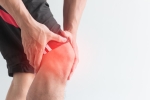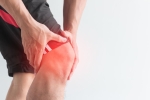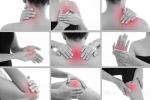Home » Blog
| Stem Cell, PRP, Acupuncture in Queens & Long Island, New York
Blog | Stem Cell, PRP, Acupuncture in Queens & Long Island, New York
Heart Attack - Arm or shoulder pain can be a sign, especially if you also have pain or pressure in the center of your chest and shortness of breath. A heart attack can be sudden, but sometimes it’s gradual. The feeling might last a few minutes, or stop and return. Your stomach, jaw, back, or neck also might hurt. You could also get sick to your stomach, lightheaded, and clammy with sweat. Call 911 if you notice these symptoms.
Read more
Pain from degenerative disc disease can be debilitating, but you have options. Here are several treatment options and ways to think about managing your degenerative disc disease. Hopefully one or a few of these will work for you. Exercise Relieves Pain - Most people don't associate exercise with pain relief, but when it comes to degenerative disc disease, exercise is an elixir of sorts. It spurs blood flow and builds the supporting structures around the affected disc so that the impact of degeneration is lessened.
Read more
Your doctor will perform a physical exam and take your complete medical history. Be prepared to tell your doctor about the specifics of your symptoms. You should also let them know about all prescription and over-the-counter (OTC) medications and supplements you’ve been taking. Even if it doesn’t seem related, you should also let your doctor know about any recent injuries or accidents you’ve had. Treatment for neck pain depends on the diagnosis. In addition to a thorough history and physical exam by your doctor, you may also need one or more of the following imaging studies and tests to help your doctor determine the cause of your neck pain:
Read more
Even if your knee injury happened a while ago, it can still cause pain. But so can many other things, including arthritis and other conditions. To find out what’s going on in your case, you’ll need to see your doctor. At that visit, you’ll talk about your symptoms and the injury. You’ll also get a physical exam, and you may need to get an X-ray, MRI, CT scan, or other tests.
Read more
If you have lumbar spinal stenosis, you may be wondering if playing golf is a good idea. If you've had a spinal stenosis surgery, you may even wonder if golf is possible. The answer for many is yes, but there are a number of considerations to keep in mind. First, recognize that golfing is not really the best thing for your low back. The golf swing imparts a tremendous amount of stress to your lumbar spine. If you are going to return to golf, be willing to accept that there is some risk of injury to the low back.
Read more
Your neck is made up of vertebrae that extend from the skull to the upper torso. Cervical discs absorb shock between the bones. The bones, ligaments, and muscles of your neck support your head and allow for motion. Any abnormalities, inflammation, or injury can cause neck pain or stiffness. Many people experience neck pain or stiffness occasionally. In many cases, it’s due to poor posture or overuse. Sometimes, neck pain is caused by injury from a fall, contact sports, or whiplash. Most of the time, neck pain isn’t a serious condition and can be relieved within a few days. But in some cases, neck pain can indicate serious injury or illness and require a doctor’s care. If you have neck pain that continues for more than a week, is severe, or is accompanied by other symptoms, seek medical attention immediately.
Read more
Being active is one of the best things you can do for your joints and the rest of your body. But injuries can happen, and they often involve the knees. Some of the most common problems are sprained ligaments, meniscus tears, tendinitis, and runner's knee. If you have an old knee injury that wasn’t properly treated, it may flare up now and then or hurt all the time. Several other things can also cause knee pain, such as: Bursitis: A bursa is a sac that holds a small amount of fluid that’s under the skin above your joint. It helps prevent friction when the joint moves. Overuse falls, or repeated bending and kneeling can irritate the bursa on top of your kneecap. That leads to pain and swelling. Doctors call this prepatellar bursitis. You may also hear it called ''preacher's knee."
Read more
A lumbar herniated disc can create sciatica pain that's often described as a searing, burning, or radiating along the path of the sciatic nerve and down the leg. No single treatment option works for everyone, so it's best to learn about everything available and see what works best for you. Here are 5 tips to help you on your way: 1. Heat can help relieve your muscle spasms...
Read more
Musculoskeletal pain refers to pain in the muscles, bones, ligaments, tendons, and nerves. You can feel this pain in just one area of the body, such as your back. You can also have it throughout your body if you have a widespread condition like fibromyalgia. The pain can range from mild to severe enough to interfere with your day-to-day life. It may start suddenly and be short-lived, which is called acute pain. Pain that lasts for more than 3 to 6 months is called chronic pain.
Read more
Physical therapy is often one of the best choices you can make when you have long-term pain (also called chronic pain) or an injury. It can make you stronger and help you move and feel better. Ask your doctor to recommend a physical therapist. You'll probably need a series of visits, and you should practice some of the exercises at home for the best results. Physical therapists have a lot of training. Still, it’s a good idea to ask them about their experience of working with people who've had conditions like yours. You can also ask them how many sessions you'll need.
Read more
Love this Post? Spread the World






















